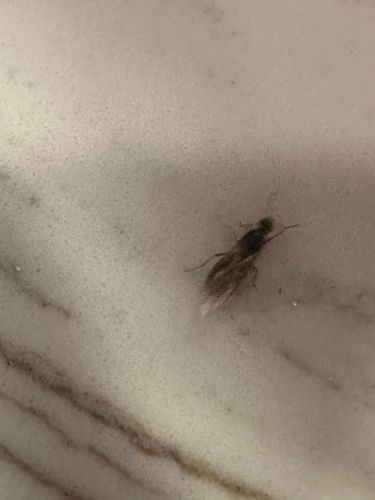Ant (winged reproductive)
Scientific Name: Formicidae (subfamily and species vary widely)
Order & Family: Order: Hymenoptera, Family: Formicidae
Size: Depending on the species, winged ants can range from 3 mm to over 15 mm in length.

Natural Habitat
Ants are found in almost all terrestrial habitats worldwide, from forests and grasslands to deserts and urban environments. They build various types of nests, including subterranean tunnels, mounds of soil, and nests inside wood or plants. Winged forms emerge from these nests, often during specific environmental conditions like after rain, for mating.
Diet & Feeding
Diet varies greatly by species. Most ants are omnivores, feeding on nectar, seeds, fungi, insects (both living and dead), and honeydew produced by aphids. The alates (winged ants) themselves may not feed much during their short reproductive flight phase.
Behavior Patterns
Ants live in colonies that can range from a few dozen to millions. They are highly social insects and exhibit complex social behaviors, including division of labor, communication through pheromones, and cooperative foraging. Winged ants, like the one pictured, are typically reproductive males and females (alates) that emerge for mating flights. After mating, females (queens) will shed their wings and attempt to start a new colony.
Risks & Benefits
Risks: Some ant species can be pests in homes, contaminating food or infesting structures (e.g., carpenter ants). Others can deliver painful stings (e.g., fire ants). Benefits: Ants are important ecosystem engineers, aerating soil, dispersing seeds, and acting as predators or scavengers, thus controlling other insect populations and aiding decomposition. They also play a role in pollination for some plant species.
Identified on: 9/1/2025